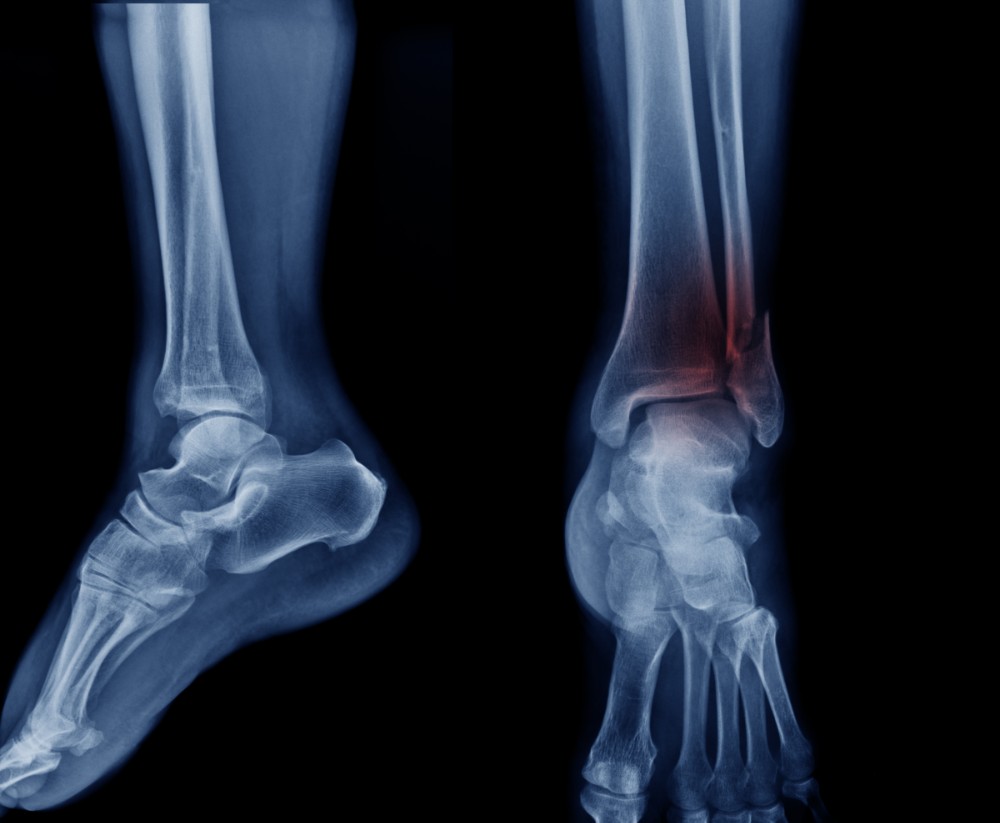Ankle Fractures
Fractures and broken bones are common injuries, especially among athletes. The most common type of ankle fracture is an inversion injury, which occurs when the foot rolls inward. This type of injury is particularly common in sports that require quick changes in direction, such as basketball and tennis.
But of course, you can fracture your ankle in any number of ways—from a fall, a car accident, or even just by stepping on something the wrong way. No matter how it happens, an ankle fracture is a serious injury that requires prompt medical attention.
Here’s what you need to know about ankle fractures, including symptoms, treatment, and recovery.
What are Ankle Fractures?
Ankle fractures are fractures of the bones in the ankle joint. The ankle joint consists of three bones: the tibia (shinbone), the fibula (smaller bone next to the tibia), and the talus (bone on top of the heel bone). A fracture is a break in the bone. Ankle fractures can occur in any of these bones.
Different types of ankle fractures depend on which bone is broken and how the break occurs. The most common type of ankle fracture is a fracture of the fibula, also called a lateral malleolus fracture. The fibula is the smaller bone on the outside of the ankle. A fracture of the fibula typically occurs when the ankle is rolled outward (inverted). This type of fracture is often seen in people who play sports such as basketball or soccer.
What Causes Ankle Fractures?
The most common cause of ankle fractures is trauma, such as a fall or an accident. The risk of ankle fractures increases with age because bones become weaker and more brittle with age. People who have osteoporosis (a condition that causes bones to become weak and brittle) are also at increased risk for ankle fractures.
Bones can also be fractured by overuse. The repeated stress of impact sports such as running, football basketball, and soccer can cause stress fractures (tiny cracks in the bone). Stress fractures are also common among military personnel.
When diagnosing an ankle fracture, Dr. Gilmore will order x-rays to determine the type of fracture and how best to treat it. He may also ask for a CT scan or MRI if the x-rays are not clear.
What are Ankle Fracture Symptoms?
The most common symptoms of an ankle fracture are pain, swelling, and bruising. The pain is usually worse with weight bearing and may be severe enough to prevent walking. The ankle may also be stiff and have limited range of motion.
There may also be deformity at the site of the fracture, such as a bulge or depression. The skin may be intact or there may be an open wound. If the bone has pierced the skin, this is called an open fracture. Open fractures are more likely to become infected, and need to be treated as an emergency.
If the fracture is not treated properly, it can lead to long-term problems such as arthritis, chronic pain, and loss of function.
Difference Between an Ankle Fracture and Sprain
An ankle sprain is a common injury that can occur when the ankle is rolled outward (inverted). An ankle sprain is a stretching or tearing of the ligaments (tissues that connect the bones). Ankle sprains are often mistaken for ankle fractures because they can cause similar symptoms, such as pain, swelling, and bruising.
However, there are some key differences between ankle fractures and sprains. Ankle fractures usually cause more severe pain that does not go away with rest. There may also be deformity or an obvious break in the bone. Ankle sprains usually cause mild to moderate pain that goes away with rest. There is usually no deformity, besides some swelling, or break in the bone.
You may not be able to tell the difference between an ankle fracture and a sprain without x-rays. Therefore, it is important to see our doctor if you have any of the following symptoms:
- Severe pain that does not go away with rest.
- Deformity or an obvious break in the bone.
- Inability to bear weight on the affected ankle.
How Are Ankle Fractures Treated?
Treatment for an ankle fracture depends on the type of fracture and the patient’s overall health. Treatment options include:
- Rest, ice, compression, and elevation (RICE): This is the most common treatment for ankle fractures. The RICE method helps reduce swelling and pain. However, be aware that the RICE method has recently been shown to delay healing in some cases. The RICE method should only be used for the first few days after the injury.
- Cast or splint: A plaster or fiberglass cast is often used to hold the bones in place while they heal. The cast or splint will need to be worn for 4-8 weeks, or longer depending on the type of fracture. The cast or splint will need to be removed and replaced every few weeks so that our doctor can check the healing process.
- Surgery: Surgery may be necessary to realign the bones or to insert metal rods, plates, or screws to hold the bones in place. Surgery is typically only recommended for severe fractures that cannot be treated with a cast or splint.
Recovery from an ankle fracture can take several weeks to several months. Physical therapy may be necessary to regain strength and range of motion in the ankle. Pain medications may be necessary to control pain during the beginning of the healing process.
Contact Us Today for Help!
Capital Podiatry located in Alexandria, VA is ready to help you with your ankle fracture or other foot and ankle needs. We treat all types of ankle fractures, from stress fractures to severe fractures. We will work with you to create a treatment plan that is best for you.
Contact us today to schedule an appointment.



